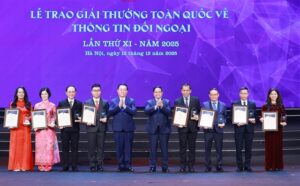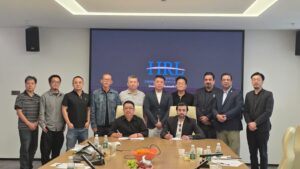Vietnam’s Garment-Textile Industry Projects $44 Billion in Exports for 2024

Hanoi, The Gulf Observer: Vietnam’s garment-textile export value is forecast to reach $44 billion in 2024, reflecting an 11.26% increase from 2023, according to the Vietnam Textile and Apparel Association (VITAS). At the same time, the sector’s import turnover is expected to grow by 14.79%, reaching $25 billion, resulting in a trade surplus of $19 billion, a 6.93% rise year-on-year.
VITAS President Vũ Đức Giang highlighted the positive growth trajectory, noting that many companies are witnessing increased order volumes for both 2024 and 2025. He acknowledged, however, that the sector continues to face challenges posed by global complexities, fluctuating shipping costs, slow trade recovery, and reduced global investment.
Growth Targets for 2025
For 2025, the garment-textile industry has set an ambitious export target of $48 billion, supported by detailed research and projections of robust order volumes. However, Giang warned of several hurdles, including stagnant pricing, sluggish consumer demand recovery, and tighter payment and production regulations.
Additionally, the sector must contend with:
- Persistently low order prices amid rising input costs.
- Stricter sustainability standards in production.
- Heightened competition from global supply markets.
- Demands for compliance with stringent labour standards, traceability requirements, and low carbon emissions targets, particularly in major export markets like the EU.
Challenges in Sourcing and Leveraging EVFTA Benefits
Nguyễn Xuân Dương, Chairman of the Board of Directors of the Hưng Yên Garment Corporation, underscored sourcing issues as a key challenge. A significant portion of raw materials is imported from China and other non-FTA countries, limiting Vietnam’s ability to fully leverage tariff advantages provided by agreements like the EU-Vietnam Free Trade Agreement (EVFTA).
To address this, Dương urged government agencies to focus on:
- Developing local raw material resources to meet origin rules.
- Establishing large industrial zones to attract foreign and domestic investors.
Technological Advancements and Sustainability Goals
To remain competitive, Vietnamese garment-textile companies are urged to:
- Invest in technology, automation, and robotics to enhance production efficiency.
- Adopt energy-saving measures and use renewable energy to secure green certifications, increasingly required for large international orders.
Despite these challenges, Vietnam’s garment-textile industry remains optimistic, driven by the sector’s resilience and adaptability in addressing global market demands while striving for sustainable growth.


